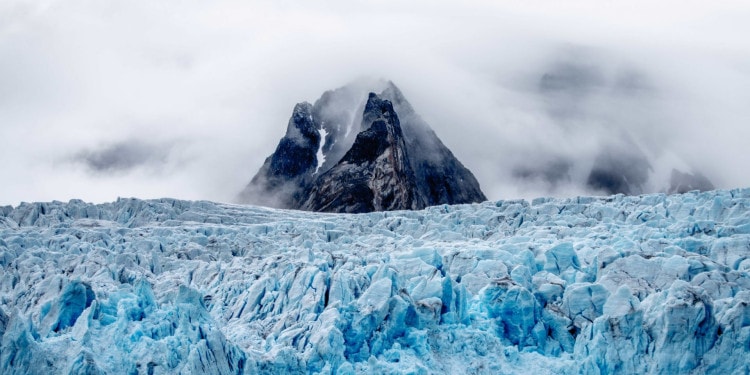We don’t have to be climatologists to acknowledge that climate change is real. Nowhere is it more noticeable than in the Arctic, where temperatures have risen two times as the global average. A quick Google search is enough to find numerous scientific articles, and other official documents from nations, the private and public sectors, and non-profit organizations about the effects of climate change in melting glaciers and wildlife in the Arctic. So why does this continue to feel as if it were happening on another planet?
Part of the reason is that the Arctic is far away from where most of us live. Thus, “the Arctic” gets labeled as this remote place that few people understand where it is and whether people live there. Sometimes, unfortunately, facts and photos are not enough to get a point across, much less to instigate action. But other times, stories help. So I will try to do my part. This is not a post about mere scientific facts (because you can look those up), but about what we need to understand to begin to care. Because only if we care enough will we act or demand action.
Last year, in August 2018, I was part of an Arctic expedition with FutureTalks. About 100 people from several nationalities, ages, and backgrounds came together to create meaningful discussions in a place where we would be undisturbed and inspired by everything and everyone around us. This happened in Svalbard, a Norwegian archipelago located in the Arctic Circle, in the Arctic Ocean, about 1,000 km away from the North Pole. Its capital, Longyearbyen, is located 78° degrees North in the largest island, Spitsbergen, and it is the northernmost town on earth. To help you locate it geographically, picture Greenland’s (located between ~59°- 83° North) northernmost region, move eastwards, and stop between mainland Norway and the North Pole. And yes, people live here: Svalbard has a population of about 2,000 people, 3,000 polar bears and other unique wildlife, like the Arctic Fox. A little further north from Longyearbyen is Ny-Alseund, the northernmost (non-militarized, permanent) settlement in the world, which has research stations from 10 countries, and a population of about 35 people year-round and 120 during the summer.
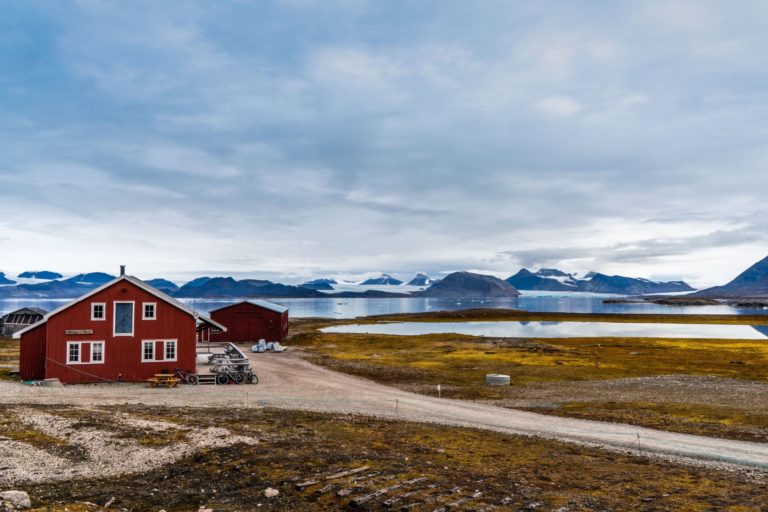
People Still Ask Whether I Went to Iceland, Greenland, the North Pole, or Antarctica
Before heading to Svalbard, I was researching information about the high Arctic, because I too was confused about a few basic facts. It is easy to mix things up with Antarctica, even though they are literally opposite poles. The Arctic, as the northernmost region on Earth, creates a circle (at ~66°33′ North) around the North Pole, which is the northernmost point on Earth (at 90° North). Thus, although both terms refer to different things and they are not interchangeable, one contains the other. The same is true for the Antarctic Circle and the South Pole. In the Arctic, there are, essentially, one sunrise and one sunset per year, which bring about six months of sunlight (and the midnight sun) and six months of darkness (the cold polar night, which is also when the Northern Lights can be seen). The average temperature in August is about 5°C and in February is -15°C. Eight countries have territories in the Arctic (in land and/or in water), but the Arctic Ocean accounts for most of this region, which during much of the year is covered in sea ice. It’s like a puzzle with several moving pieces. On the other side, Antarctica, also known as the “White Continent,” is an ice-covered landmass surrounded by the Southern Ocean. Although 25 countries have permanent research stations here, they do not own the land.
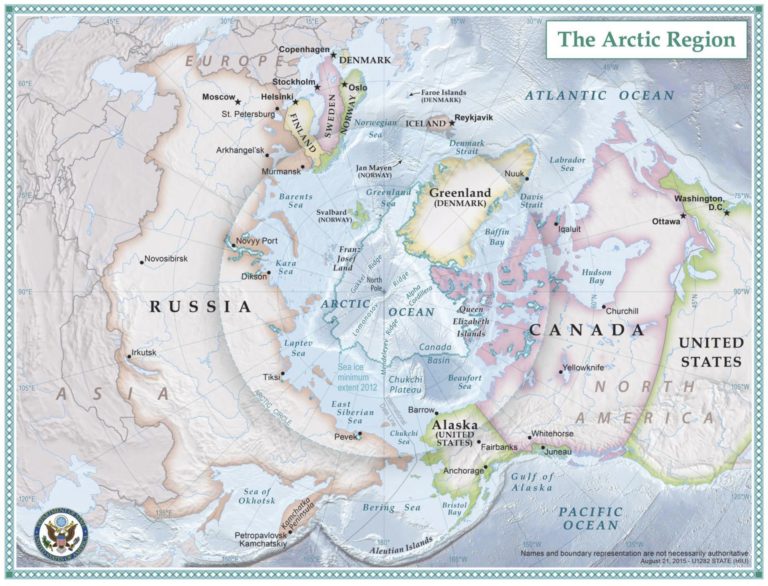
Melting Ice: A Spectacular Threat
One of my favorite memories from the FutureTalks Arctic expedition will always be kayaking next to Monaco Glacier (or Monacobreen). We had arrived at the fiord, Liefdefjorden, in the morning and had been soaking in the breathtaking scenery since then. There were around forty spots available, and the plan was to take turns between 4 p.m. and 10 p.m. The crew prepared the kayaks, we put on warm suits and took the five single and three two-person kayaks.
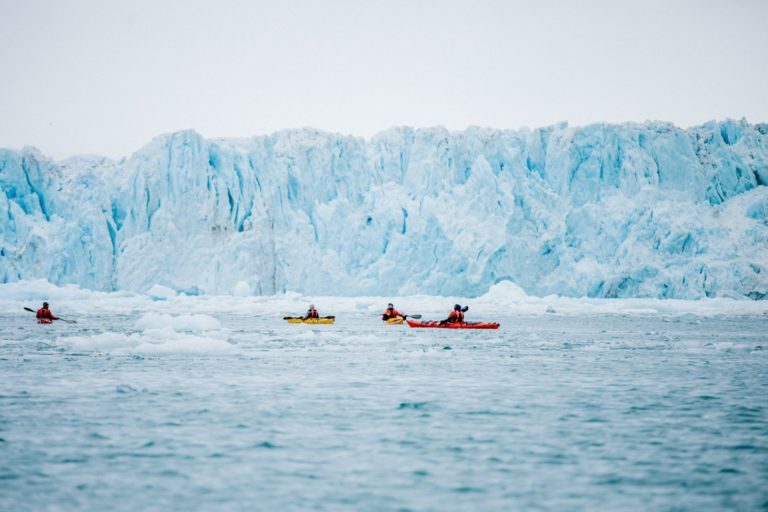
The water seemed clear and calm. However, the crew constantly reminded us to “stay away from the ice!” After a few minutes, the small icebergs that seemed to have been far from us, all of a sudden were fast approaching and became ubiquitous around us, in what seemed like low wind conditions. Someone got stuck in the ice, and the speed boat had to pull him out, but we all continued kayaking, now more careful than before.
Eventually, as everyone was paddling back to the ship, I was heading back behind two friends who were sharing a kayak. One pushed the ice away from their kayak while the other paddled forward. However, I was on my own, and the ice was moving so quickly that their path was closing behind them before I could pass by (note that I’m not a kayaking expert at all). Once I couldn’t make a turn in time, I was stranded in the opposite direction and ice was covering the path in front of me. So I was the last one out there and “Black Mamba” came to the rescue in the speed boat. I hopped on and went back with him while an experienced staff bravely paddled through the moving ice back to the ship. When we approached the ship, the boat had to break some ice to reach the port. Onboard, the crew informed me that the rest of the kayaking had been canceled due to the amount of ice that was now surrounding us. In fact, it wasn’t even safe for the ship to stay there, so we had to evacuate the area soon after.
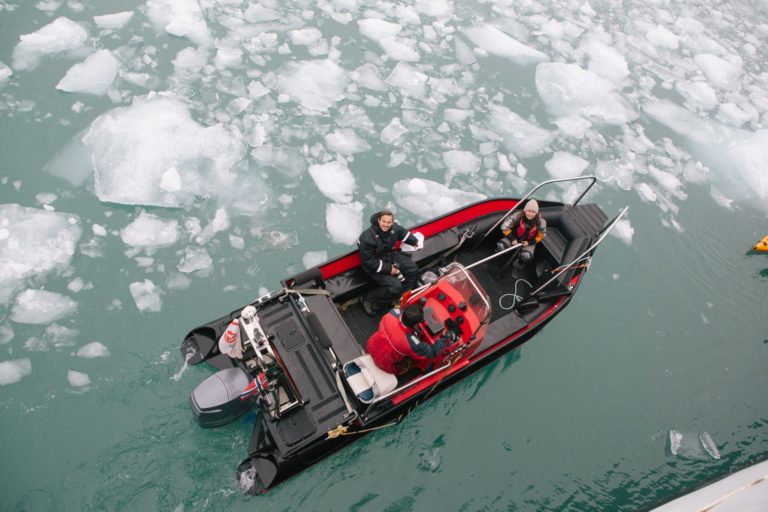
I want to highlight two points with this: First, it turns out that where the ship had stopped and where we were kayaking, as well as the two glaciers (Monacobreen and Seligerbreen) separated by a mountain, all used to be one large glacier. The surge of the glacier has been studied since 1991, which is when it most likely started. Between 1991 and 2016, Monacobreen has retreated over two kilometers. Satellite images demonstrate the thinning of the glacier front and its separation from Seligerbreen, which is similar to what has happened with other shrinking glaciers in Svalbard. Warming temperatures in recent years have caused irreversible melting of mountain glaciers as the rate at which ice melts is higher than the one at which snow and ice accumulate, and those in Svalbard are not the exception.
Second, it is hard to fully grasp the gigantic magnitude of glaciers and icebergs. We can easily forget that we are looking at extensions of ice that are many kilometers wide and can be as tall as skyscrapers. When a “chunk” breaks off, we may not realize that these icebergs are larger than a house. And once they have separated, they continue moving and carrying everything along their ways with them. This is just another example of the immense power of nature, one that should never be underestimated, even if at points it seems calm and harmless. We have seen recently with multiple, stronger-than-average extreme weather events (e.g., wildfires, droughts, floods, and hurricanes/typhoons) that disrupting natural processes (a consequence of climate change) can bring tremendous ecological consequences that are devastating for humans and the planet. As ice continues to break off the glaciers and polar ice caps, even mid-sized icebergs threaten nearby villages and will cause local, regional, and global disruptions to Earth system processes (e.g., to the temperature and salinity of the oceans).
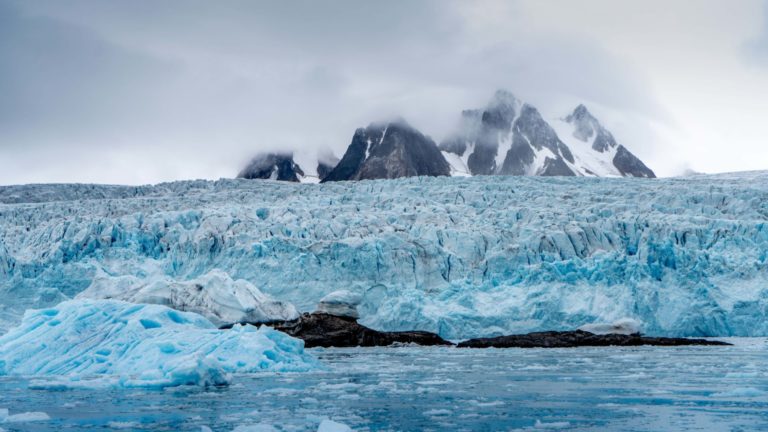
In a similar way that mountain glaciers are melting, the ice sheets in Greenland and Antarctica are destabilizing and melting more quickly. Of special concern is West Antarctica, where massive ice shelves have been detaching or collapsing in the past 20 years or so. Although melting of floating ice does not increase sea level, melting from mountain glaciers and ice sheets does. Even more, ice is not the only one transformed by the effects of warmer temperatures. As water temperature increases, it expands. This is referred to as “thermal expansion,” and has caused about 50% of global sea level rise in the last 25 years. Therefore, melting glaciers and warming temperatures in both poles are the foundation of global sea-level rise, which causes coastal flooding in small island nations, like those in the southern Pacific Ocean, as well as in major metropolitan areas across the globe, from Dakha to Shanghai to New York City. Although unstoppable, we need to decrease the rate at which this is occurring in order to gain extra time to find solutions to protect people in coastal cities and small islands, perhaps giving us time to prepare for the ultimate adaptation scenario to sea-level rise: forced evacuation and migration.
The Changing Permafrost: The Floor Is Melting
While we hope to keep global warming well below 1.5°C, people in Svalbard have already started experiencing a temperature increase of 5-7°C. Expedition staff told us stories about how climate change has impacted them personally, from seeing the changes in the glaciers first-hand, to the changing permafrost and the consequent risk of landslides.
As the permafrost warms up and thaws, the infrastructure (e.g., pipelines, powerlines, and even houses and roads) that was designed for grounds with permanent below-freezing-temperatures is at risk of being damaged. Thus, the terrain may become unstable and unsafe for both humans and wildlife. A place of special interest is the Global Seed Vault (or the Doomsday Vault, the world’s most important freezer, a library of life, or simply the seed bank). The storage area itself is more than 100 meters inside the mountain, carved into the (solid and frozen) permafrost. The entrance can be seen from Longyearbyen’s main road. Since permafrost has a temperature of about -4°C, the storage area only needs to be cooled down a few additional degrees to reach the -18°C desired mark.
Opened in 2008, the Seed Vault is protected by international laws and treaties and has collected more than one million seed samples of over 6,000 species to ensure crop diversity for future generations and to safeguard seeds from potential disasters and conflicts. However, the thawing permafrost, melting ice, and excessive rain have created unexpected consequences well before anticipated. In 2017, water leaked into the tunnel but did not reach the vault, fortunately. It is unclear whether this could continue to happen over the years, but precautions are already on their way, including waterproofing the 100 meter tunnel at the entrance and installing pumps in case of a future flood.
Although largely unknown, the world needs this place. The first withdrawal was made in 2015 after the samples from Aleppo seed bank in war-torn Syria became inaccessible. As in all other seed banks around the globe, the International Center for Agricultural Research in the Dry Areas (ICARDA), which runs the bank in Aleppo, had sent samples to Svalbard for storage. In order to continue important research that had been stopped due to war, ICARDA withdrew seeds to create duplicates and send them to Lebanon and Morocco. Most of these samples have now been returned to Svalbard, where they shall remain for years to come.
With warmer temperatures come increased precipitation in the form of rain and wet snow; and with abrupt temperature changes combined and a little bad luck in the form of strong winds in the “wrong” direction, avalanches join landslides as a threat for locals. In December 2015, an avalanche hit Longyearbyen, displacing and destroying 11 homes and killing two residents (two and 42 years old). Due to the unique conditions of the Arctic, including its accelerated warming, studies from avalanches in other places (e.g., in the Alps) are not directly transferable. In the last 15 years, seven people have died from avalanches in Svalbard.
In Summary
I am not an expert in climatology, polar oceans, ice dynamics, or similar. And this is precisely why I wanted to write about this. If I can begin to understand where the Arctic is, who lives there, and what is going on up there, maybe any reader can, too. We need to spark interest, engage people, and create dialogues in order to make people care. Only then will we be moved to act for what is right. And we all should.
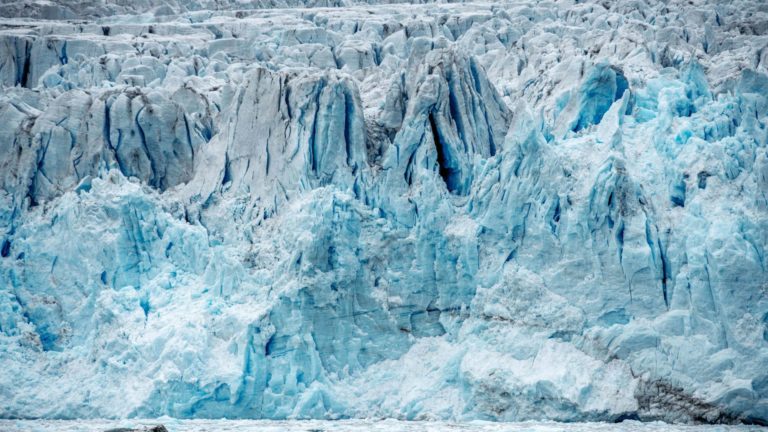
Once We Begin to Understand, We Are Able to Care. Then We Can Act.
I was lucky to meet Hilde Fålun Strøm, one of the two co-founders, with Sunniva Sorby, of Hearts in the Ice, an overwintering project that will take place between August 2019 and May 2020. I recommend checking out this project to learn how brave women who are passionate about protecting the Poles are turning into citizen scientist (i.e., citizens engaging in scientific studies by taking small actions that anyone with little training but great interest could perform) to engage people of all ages in conversations around climate change.
In 2015, Greenpeace took renowned pianist and composer Ludovico Einaudi to play Elegy for the Arctic, “specially composed to help protect what we love.” The video clip, as well as The Making Of, shows the profound melody and stunning background, and was recorded in front of the Wahlenbergbreen glacier near Longyearbyen. This video has a powerful meaning and may help touch people’s hearts through music.
I am indebted to all the fellow delegates who made this experience unique, and to the Arctic for reminding us of the beauty and power of the Earth, as well as the importance to treat it as the precious shared home it is.
I appreciate organizations like FutureTalks that value the power of bringing diverse groups of people together to create meaningful discussions and ideas. I am indebted to all the fellow delegates who made this experience unique, and to the Arctic for reminding us of the beauty and power of the Earth, as well as the importance to treat it as the precious shared home it is.


